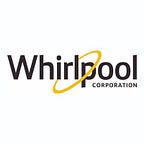A Kitchen that is“Out of this World”
The story of the first Whirlpool Corporation space kitchen and the missions it served.
The Soviet Union’s launch of its first Sputnik rocket on Oct. 4, 1957 engaged the United States in the “Space Race.” As part of its efforts to jump-start its own space program, the U.S. Air Force awarded Whirlpool Corporation a contract to build the world’s first experimental Space Kitchen in 1960. The company’s enormous success in this and subsequent partnerships with the National Aeronautics and Space Administration (NASA) greatly enhanced its reputation as a cutting-edge innovator.
Even for an experienced and determined organization such as the Whirlpool Corporation, the requirements were daunting. The company was charged with developing an integrated unit that could provide all the food and beverages required by three astronauts for a 14-day mission, all of which needed to fit compactly into a cylindrical space approximately 10 feet long and 7.5 feet in diameter. Considering that all this cooking, eating and disposal had to take place within a zero-gravity environment, Whirlpool Corporation’s achievements were unprecedented.
The company devised a unit that included a miniature thermo-electric refrigerator, freezer, three-cavity oven, self-heated water system, storage space for food and disposal units for both dry and wet waste.
Defying the virtually impossible, the systems worked. Thanks to Whirlpool Corporation, American astronauts enjoyed the planet’s first frozen, non-freeze-dried ice cream. And astronauts constructed the first Christmas tree in space aboard Skylab using food tins manufactured by the Whirlpool Corporation.
For more information about the space kitchen, browse our archives:
The Whirlpool Corporation Space Kitchen
1961 — The Space Race
